#Chic Metropolitan Magazine
Text
youtube
Paris in style.
Eurostar, the high-speed rail service linking the UK with mainland Europe, has released its brand-new OOH, digital and cinema advertising – the first since the pandemic. The ‘You see more when you don’t fly’ campaign first aired in 2019 and is now back with a fresh take for audiences in the UK, France and Belgium from 5 September 2022.
With over 20 trains running daily from London St Pancras to exciting destinations including Paris, Brussels, Lille, Rotterdam and Amsterdam, Eurostar is the greener way to go to explore some of Europe’s most iconic cities. The latest instalment of the campaign sees the return of Seymour the Ostrich, a character which rejects flying in favour of a better way to travel.
To best represent the cities that Eurostar serves, House 337, the advertising agency behind the new campaign, conducted both qualitative and quantitative data research from over 2,000 respondents on what makes each city iconic. This insight helped identify key reasons people travel to each city.
While in the UK, the Ostrich is depicted visiting the Crown Jewels. While on the Continent, Seymour visits a restaurant in Belgium for moules, a chic Parisian boutique store selling gorgeous looking berets and Amsterdam’s famous flowers and bikes.
The campaign will launch with TV, Cinema and OOH, as well as digital first media formats. In addition to being amplified through Eurostar’s own advertising platforms, social media channels, customer emails and onboard customer magazine, Metropolitan, allowing users to find out more about travelling to their favourite cities via Eurostar.
The ad campaign aims to support the overall marketing approach to get consumers excited about city travel once again.
3 notes
·
View notes
Text
VOGUE
Fashion | Beauty | Model
Might Be Lost In A Wrong Century, Highly Unrivaled Woman This Season.
By Annual Magazine


Amidst the vibrant energy and opulent lifestyle of the metropolitan city, one woman has captured the public's imagination, becoming the subject of intense discussion over the past few weeks. With her effortlessly chic style and the warm sunlight illuminating her features, the striking crimson hue of her lipstick instantly identifies her as the enigmatic Sacredmiss Douglas.
Her manner of expression is truly remarkable, akin to the gentle caress of a breeze - soft, ethereal, and seemingly intangible. This unique quality has earned her a collection of endearing nicknames bestowed upon her by her equally distinguished friends. Her circle, composed of individuals as refined and accomplished as herself, have taken to calling her by various monikers that capture different facets of her personality. Among these affectionate appellations are "Miss," a nod to her graceful demeanor; "Missie," perhaps a more playful variation; "Sassy," which likely alludes to her quick wit and charm; and "Sissy," suggesting a warm, familial closeness with her peers. Each nickname serves as a testament to the multifaceted nature of her character and the deep bonds she has forged within her elite social circle.

This captivating figure has carved out a unique niche for herself in the digital realm, dedicating her days to the art of girl-blogging across popular platforms such as Tumblr and the X application. Her life updates, shared through various social media channels, have garnered significant attention and a growing following. These glimpses into her world paint a vivid picture of a woman who not only embraces life's pleasures but seems to effortlessly navigate its challenges with grace and success. Her online presence serves as a testament to her ability to curate a lifestyle that is both aspirational and relatable, resonating with audiences who are drawn to her apparent joie de vivre and seemingly unfaltering good fortune.
0 notes
Text
Chic Metropolitan Power of Women Issue featuring Celebrity Lisa Vanderpump on the Cover!
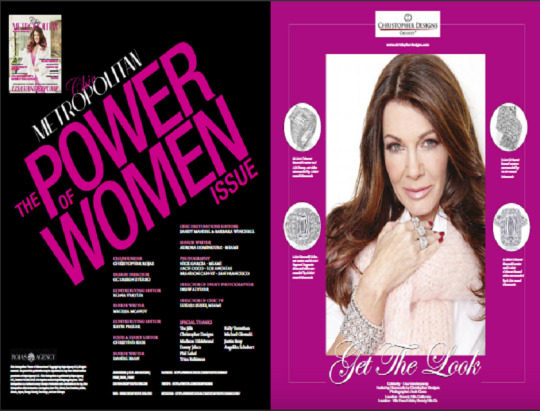
As we start 2016, we at Chic Metropolitan Magazine feel that publishing an issue completely dedicated to women is long overdue. These ladies are not only challenging traditional notions, they have successfully shifted the paradigm. Whether being the powerhouse behind a successful business, setting new records in sporting events, or even attaining the office of the President of The United States, nothing is out of reach. We have witnessed female CEO’s, Investors, Developers, Inventors, Top Real Estate Agents, Designers, Head Chefs, Winemakers, Racecar drivers, Professional NFL coaches, and UFC fighters, among others. This trend will no doubt continue as women come to dominate their respective fields and change the world. All of these factors combined make this the perfect time to announce our next issue, the highly-anticipated Chic Metropolitan Magazine ‘Power of Women’ Issue! We have assembled over 100 of among of the most noted game-changers
More info: https://issuu.com/chicmetropolitan/docs/lv23210_chic_metro_mag_de_lores
1 note
·
View note
Text
Chris Rojas — CEO & Founder Chic Metropolitan Magazine - San Francisco, CA





Source:- Chris Rojas San Francisco
#Chris Rojas#Chic Metropolitan#Chic Metropolitan Magazine#Chris#Rojas#Chic#Metropolitan#Magazine#Lifestyle#Fashion#Chris Rojas Chic Metropolitan#Chris Rojas Chic Metropolitan Magazine#Chic Metropolitan Chris Rojas#Chic Metropolitan Magazine Chris Rojas#Rojas Agency#Chris Rojas San Francisco#San Francisco
26 notes
·
View notes
Text
Chris Rojas CEO & Founder of Chic Metropolitan Magazine
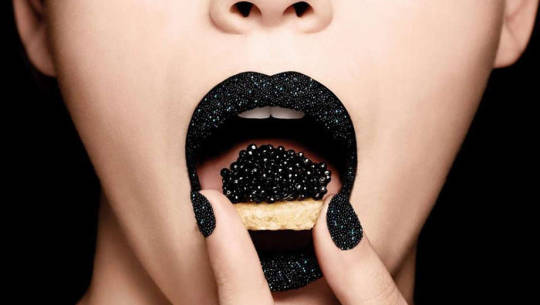
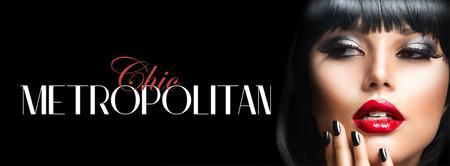

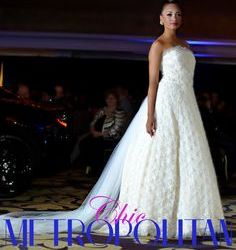
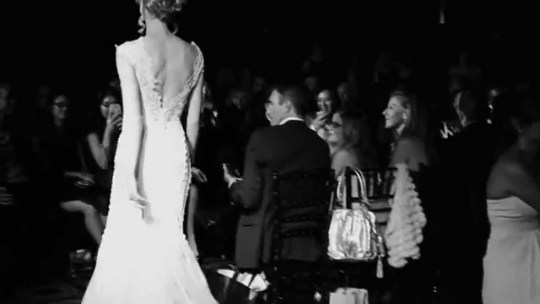

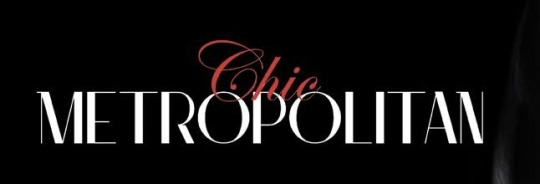
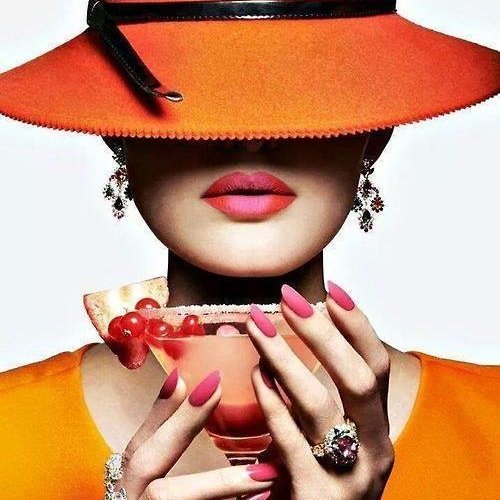
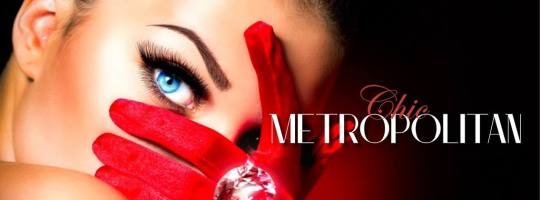
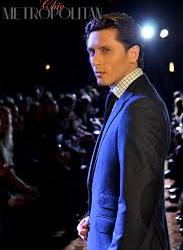
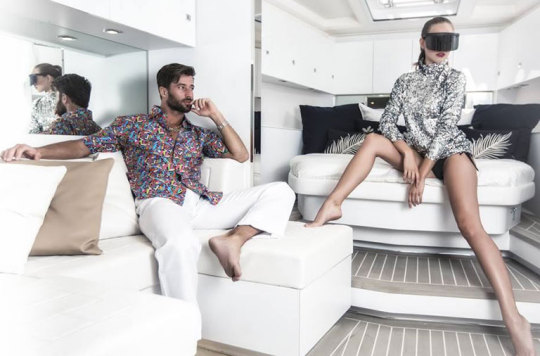
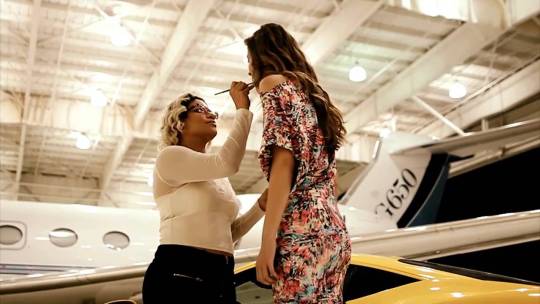
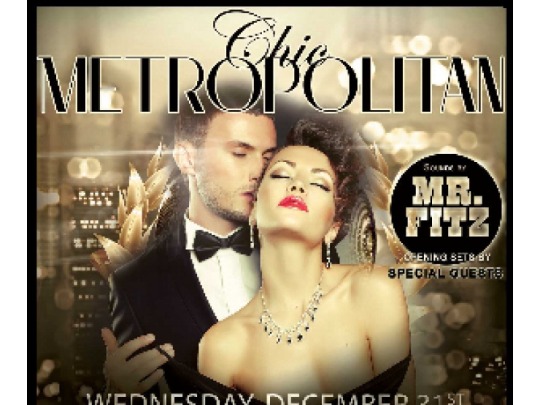
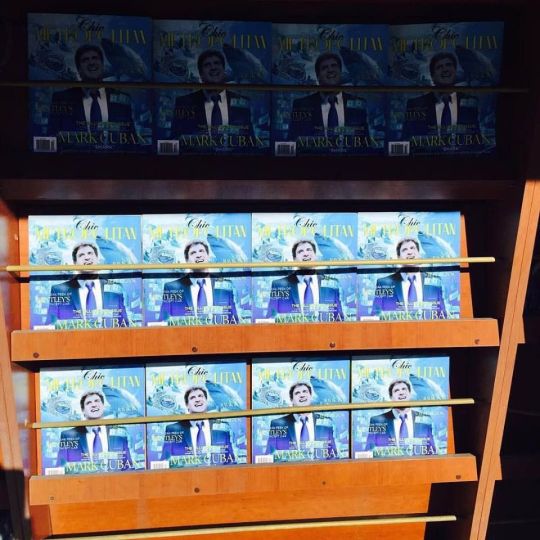

#chic metropolitan#ChicMetropolitan#Chic#Metropolitan#Chris Rojas#Chris#Rojas#Chic Metropolitan Magazine#Chris Rojas Chic Metropolitan#Chris Rojas Chic Metropolitan Magazine#Chic Metropolitan Chris Rojas#Chic Metropolitan Magazine Chris Rojas#Rojas Agency#Chris Rojas Agency#Tumblr#Chris Rojas San Francisco#San Francisco
11 notes
·
View notes
Text
Email From Chris Rojas CEO & Founder Of Chic Metropolitan Magazine











Source:- Chris Rojas
#Chris Rojas#Chic Metropolitan#Chic Metropolitan Magazine#ChrisRojas#Chris#Rojas#ChicMetropolitan#Chic#Metropolitan#Magazine#Luxury#Lifestyle#Fashion#San Francisco#ca#Chris Rojas Chic Metropolitan#Chris Rojas Chic Metropolitan Magazine#Chic Metropolitan Chris Rojas#Chic Metropolitan Magazine Chris Rojas#Rojas Agency#Chris Rojas Agency#Chris Rojas San Francisco
11 notes
·
View notes
Text
Chris Rojas - CEO & Founder of Chic Metropolitan Magazine









Source:- Chris Rojas
#Chris Rojas#ChrisRojas#Chris#Rojas#Chic Metropolitan Chris Rojas#Chic#Metropolitan#Chic Metropolitan Magazine#Magazine#Chris Rojas Chic Metropolitan#Chris Rojas Chic Metropolitan Magazine#Chic Metropolitan Magazine Chris Rojas#Rojas Agency#Lifestyle#Fashion#Chris Rojas San Francisco#San Francisco
9 notes
·
View notes
Text
Chic Metropolitan Magazine - Chris Rojas
Chris Rojas CEO & Entrepreneur of Chic Metropolitan Magazine - National Luxury Lifestyle Magazine Sophisticated, Fashion, Red Carpet and the Pulse of everything going on in your Upscale City.






Chic Metropolitan Chris Rojas
#Chic Metropolitan#Chris Rojas#Chic Metropolitan Magazine#Chic Metropolitan Chris Rojas#Chic Metropolitan Magazine Chris Rojas#Chris Rojas Chic Metropolitan#Chris Rojas Chic Metropolitan Magazine#Rojas Agency#Chris Rojas Agency#Chic#Metropolitan#Magazine#Chris#Rojas#Tumblr#Chris Rojas San Francisco#San Francisco
13 notes
·
View notes
Text

Model - Chen Siqi
Nationality - Chinese
Height - 5'11
Agencies - Wilhelmina (NY) Metropolitan (Paris) Brave (Milan) Milk (London)
Notable Work - Chic Magazine China November 2018 Cover
#chen siqi#chinese#model#fashion#editorial#magazine#lovefoundmodelslost#lovelostfashionfound#designer#fashion model#fashion editorial#fashion designer#m#metropolitan#wilhelmina#brave#milk#chic#chic magazine#chic china#magazine cover#chic cover#chic magazine cover#chic china cover
7 notes
·
View notes
Link
Cool vibes prevail in Jamie Lloyd’s production of the Harold Pinter adultery tale Betrayal. The actors are beautiful: hunky Tom Hiddleston, long-limbed Zawe Ashton, bushbaby-eyed Charlie Cox. The set is minimalist. From time to time there is seductive jazz music, the soundtrack given electronic blips to make it edgier (unless they were simply a technical glitch).
So is all this gorgeousness and fashion hype matched by intellectual and emotional force? At the end of the show, audience members hurried out to make it to the stage door for selfies with the superstar Hiddleston and his colleagues. That may have been a measure of celebrity-worship madness rather than any gauge of the evening’s true dramatic value.
Pinter, himself a vigorous adulterer, was certainly on home ground with this 1978 play. “Oldest friends” Robert and Jerry work in publishing in London. Jerry was best man when Robert married Emma. Jerry has betrayed that friendship by having a long, apparently undiscovered romance with Emma. The story opens two years after the end of their affair. Emma (here in flared jeans, perched on a chair to accentuate slender ankles and bare feet) tells Jerry that Robert now knows they cheated on him. Jerry is aghast. How could she have betrayed their philandering betrayals?
The play has reverse chronology, slowly working its way back to Emma and Jerry’s first drunken flirtations nine years earlier. That timeline was an innovative touch and is one of the few things I remember from Peter Hall’s first production of Betrayal at the National in 1978. Maybe adultery went over my teenage head, or maybe Pinter, ultimately, so dodges stark condemnation of adultery that the play can seem bland. Not that Lloyd’s production here is anything but watchable. It is spare, chic, sexy, and it marks the end of the Jamie Lloyd Company’s Pinter season with aplomb.
The stage is mostly empty but for a couple of chairs; the set’s pale pink walls have a subtle marble effect. There is judicious use of a revolve and clever lighting that throws the actors’ shadows onto the back wall. The shadows are so clear that, when they’re in silhouette, you almost feel you can see both sides of an actor’s face.
The three players are excellent so far as the direction asks them to go. Jerry, Emma and Robert are presented as suave 21st- century metropolitans, even if the script occasionally has them talking in 1970s ways. Bluff, shameless Jerry (Cox) recalls slipping off to a pub’s phone box to call Emma (Ashton). If you wanted to bed your best friend’s wife in the 1970s, you needed a handful of 2p coins for those romantic calls. When Emma goes on holiday to Italy, Jerry writes her a love letter and sends it poste restante to an American Express office in Venice.
Such 1970s details are rather charming. Robert and Jerry have regular boozy lunches at an Italian bistro. How one mourns such congenial practices — waiter, another bottle of house white before we go back to work! — in the publishing world. Some of the dialogue feels chauvinist by today’s measures. Jerry’s chat-up lines are terribly cheesy and strikingly direct. You wonder if that was how Harold impressed Joan Bakewell.
Robert and Emma have their marital crisis while on their Venetian holiday and this produces the evening’s best moment. Hiddleston summons real tears to his eyes, even while keeping Robert’s emotional display to a minimum. Ashton’s admission of her affair with Jerry is done with a memorable, husky, throwaway “We’re lovers”, just after she has given Robert’s face a brief, tender stroke.
While one can admire the production’s urbanity and its visual sleekness, the lack of anger, particularly with its non-event of an ending, left me unsatisfied. Zoned-out lack of passion may be how chichi Londoners suppose they should cope with infidelity, but it feels more like a design choice than a truthful account of what happens when a marriage disintegrates. The destructive stupidity of most illicit affairs is understated. Pinter, with his own record on infidelity, possibly wanted it kept that way.
23 notes
·
View notes
Photo
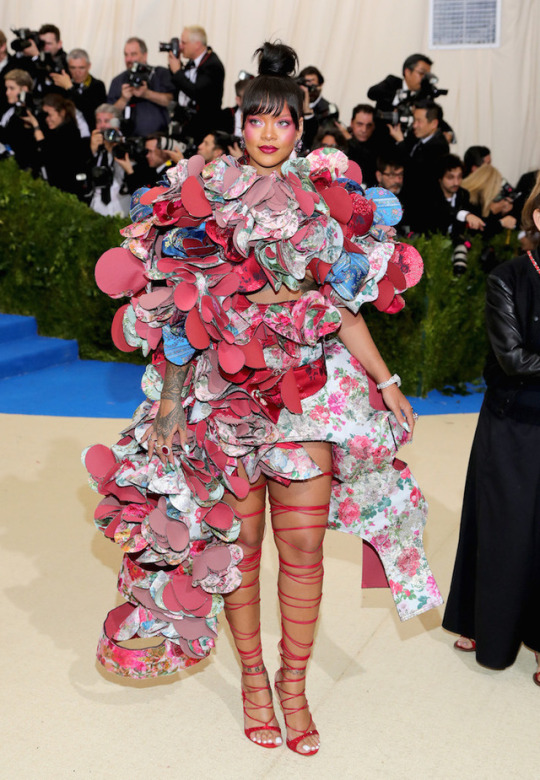
New Post has been published on https://fitnesshealthyoga.com/best-all-time-celebrity-met-gala-fashion-outfits/
Best All-Time Celebrity Met Gala Fashion Outfits
Scroll To See More Images
For serious fans of fashion, there’s no bigger red-carpet affair than the annual Costume Institute Benefit—a.k.a. the Metropolitan Museum of Art Gala, or Met Gala for short—where celebrities and high fashion collide in a bonanza of couture gowns that more than rivals the Oscars in unabashed glamour. Part of the evening’s fun—even for us spectators—is seeing what attendees choose to wear on the red carpet at the Gala, which will be held Monday night. Considering attendees’ high-design attire is typically loosely inspired by the exhibition’s theme, we have a feeling this particular red carpet will be one for the record books, and we’ll see some of the best Met Gala dresses yet.
However, before we can look ahead to this year’s extravaganza, we decided to look back at some past memorable Met Gala gowns that we’re still talking about.
From supermodels (Karolina Kurkova in a head-to-toe custom Rachel Zoe creation that resembled liquid gold, Gisele Bündchen’s red-hot Valentino, Anja Rubik’s skin-baring Anthony Vaccarello) and starlets (Beyoncé in showstopping Givenchy, Diane Kruger in Jason Wu) to the fash pack (Alexa Chung in Marc Jacobs, Ashley Olsen in vintage Dior, Zoe Kravitz in Alexander Wang), there’s no denying that everyone who shows up to the year’s most major red carpet does so with a serious fashion moment in mind.
Neilson Barnard/Getty Images.
Rihanna, Met Gala 2017
As an annual Met Gala favorite, Rihanna didn’t disappoint when she wore a Comme des Garçons structured flower-like dress by Rei Kawakubo, a Japanese designer who was honored with that year’s theme. The look, which was straight from Comme des Garçons’s Fall 2016 runway, used floral fabrics, which were layered and pulled apart to look like petals.
Jackson Lee/FilmMagic.
Zendaya, Met Gala 2017
Though Zendaya strayed from 2017’s avant-garde theme, she still shut down the red carpet when she showed up in a colorful Dolce & Gabbana Alta Moda ball gown decorated with vibrant orange and blue parrots. Z complemented her look, which boasted a floor-length train, with a voluminous Afro.
Andrew H Walker/REX/Shutterstock.
Cardi B, Met Gala 2018
Cardi B’s 2018 MOSCHINO Met Gala look (with the theme Heavenly Bodies: Fashion and the Catholic Imagination) was beyond iconic.
Larry Busacca/Getty Images.
Taylor Swift, Met Gala 2016
As 2016’s Met Gala chair, Taylor Swift created chatter on the internet for the metallic minidress she wore in honor of that year’s theme, Manus x Machina: Fashion in an Age of Technology. The look consisted of a robot-like Louis Vuitton dress with cutouts and a ruffled skirt with knee-high lace-up heels and black lipstick complementing Swift’s electric-blonde hair.
Mike Coppola/Getty Images for People.com.
Solange, Met Gala 2016
Solange didn’t exactly fit 2016’s technology-inspired theme, but many fans considered her lemonade-yellow David Laport dress, which featured accordion-like pleats, to be a nod to her sister Beyoncé’s album Lemonade, which came out a month earlier. Solange completed her look with matching latex leg warmers and clear sandals.
Charles Sykes/Invision/AP/REX/Shutterstock.
Lena Waithe, Met Gala 2018
When Master of None’s Lena Waithe showed up to the 2018 Met Gala in a literal rainbow cape, we knew it was going to be a good night.
Karwai Tang/WireImage.
Lupita Nyong’o, Met Gala 2016
Lupita Nyong’o stunned on the Met Gala red carpet in 2016 when she wore a jade sequined Calvin Klein shift dress with a near-translucent train. But it was her hair that caught the attention of the internet. Shortly after Nyong’o walked the red carpet, Vogue published an article comparing her sky-high bun to Audrey Hepburn’s in a 1963 Vogue photo shoot. The actress later called out the magazine on Instagram, explaining that her hair wasn’t inspired by Hepburn, but by traditional African hairstyles and Nina Simone.
J. Kempin/Getty Images.
Kendall Jenner, Met Gala 2017
Kendall Jenner definitely turned heads in 2017 when she showed up at the Met Gala in a near-naked La Perla dress. The sheer look, which featured a large diagonal cutout on Jenner’s torso, was flecked with glitter and featured a low-scooped open back, revealing Jenner’s derriere.
J. Kempin/Getty Images.
Katy Perry, Met Gala 2017
As one of 2017’s Met Gala chairs, Katy Perry raised the bar when she wore an avant-garde red-tulle dress by John Galliano. The look, which featured a floor-length veil and sleeves embellished with large jewels, also included a crown-like headpiece with the word “Witness,” which would later become the title of Perry’s 2017 album.
Jamie McCarthy/FilmMagic.
Claire Danes, Met Gala 2016
From a first look, Claire Danes’s 2016 sky-blue Cinderella-like Zac Posen ball gown looked like another pretty dress and far from that year’s technology-inspired theme. But in the dark, fans learned that the one-of-a-kind dress was sewn with dozens of fiber optics, allowing it to twinkle with lights when it was pitch-black. Posen revealed the high-tech effect on his Instagram.
Neilson Barnard/Getty Images.
Cara Delevingne, Met Gala 2017
Cara Delevingne took advantage of her freshly shaven head at the 2017 Met Gala by glazing it with slick silver paint. She paired her metallic buzzcut with a sci-fi-inspired pantsuit by Chanel with bold shoulders and a futuristic, star-like pattern.
David Fisher/REX/Shutterstock.
Rihanna, Met Gala 2018
Rihanna really stuck to the 2018 “Heavenly Bodies: Fashion and the Catholic Imagination” Met Gala theme when she game dressed as the literal Pope. We’re still screaming about it.
Kevin Mazur/WireImage.
Madonna, Met Gala 2016
Madonna earned mixed reviews when she wore a sheer and skin-baring Givenchy dress to the 2016 Met Gala. The look, which exposed Madonna’s butt and breasts, was criticized by some for being too revealing. Of course, Madonna had the last word. After the controversy, the singer took to her Instagram to explain that her dress was a “political statement” against “an ageist and sexist society.”
Andres Otero/WENN.com.
Kim Kardashian, Met Gala 2013
A pregnant Kim Kardashian didn’t exactly stick to the PUNK: Chaos to Couture theme of 2013’s gala, but her Givenchy dress spawned 10,000 memes—and was of particular significance, given it was the first time Anna Wintour allowed her to attend.
Getty Images.
Diana Ross, Met Gala 1981
Diana Ross’s 1981 Met Gala gown would look right at home on the 2018 red carpet, given fashion’s recent obsession with ruffles and off-the-shoulder cuts.
WENN.com.
Solange, Met Gala 2015
When every other star was tripping over themselves to prove their dresses were the most naked, Solange rolled up to the 2015 Met Gala in this round Giles dress—and killed it.
Mari Sarai/Wireimage.
Amber Valletta, Met Gala 1999
Amber Valletta looked every inch the supermodel in shiny gold at 1999’s “Rock Style” gala.
Andres Otero/WENN.com.
Sarah Jessica Parker, Met Gala 2013
Sarah Jessica Parker, patron saint of the Met Gala, can always be counted on to show up in something fabulously OTT, like this Giles Deacon gown and Philip Treacy Mohawk headpiece in 2013, proving that she truly gets the spirit of the event every year.
Tom Gates/Getty Images.
Diana Vreeland, Met Gala 1981
Legendary fashion editor Diana Vreeland and Bill Blass at the 1981 gala, whose theme was “‘Eighteenth Century Woman.”
Flashpoint / WENN.
Lauren Santo Domingo, Met Gala 2008
In 2008, socialite and fashion It-girl Lauren Santo Domingo wore a silver glittering Nina Ricci gown—created by then-designer Olivier Theyskens—end of story. But it wasn’t, because the dress caused a bit of a scandal when the house dressed SJP in the same exact dress months later for the premiere of the “Sex and the City” movie. The brand responded to the controversy by saying LSD isn’t technically a celebrity, so they didn’t recycle.
Andres Otero/WENN.com.
Lupito Nyong’o, Met Gala 2014
Fresh off her fame-making red-caped-dress moment, Lupita Nyong’o made a dramatic grand entrance at the 2014 gala in flapper-inspired Prada.
Getty Images.
Zoë Kravitz and MIA, Met Gala 2010
The cool crowd—also known as MIA and Zoë Kravitz—arrived on the arm of Alexander Wang at 2010’s “American Women”-themed gala.
WENN.
Florence Welch, Met Gala 2012
Florence Welch brought it to the 2012 gala honoring Miuccia Prada and Elsa Schiaparelli, although she opted to wear a stunning multitiered McQueen dress. She showed up on several “worst-dressed” lists, proving again that the masses just don’t get it.
Toby/WENN.com.
Anja Rubik, Met Gala 2013
Supermodel Anja Rubik rolled up to the 2013 punk-themed gala in a mini red leather Anthony Vaccarello number—and it promptly went down in the annals as one of the coolest, most memorable looks ever.
WENN.com.
Karen Elson, Met Gala 2015
In 2015, supermodel-turned-rocker Karen Elson debuted a jaw-dropping Dolce & Gabbana look on the red carpet. Whether it played into the night’s theme—”China: Through the Looking Glass”—is debatable, but the glamour is not.
Andres Otero/WENN.com.
Anne Hathaway, Met Gala 2013
Anne Hathaway shed her goody-goody image at the 2013 punk-themed gala, replacing her long brown hair with a cropped platinum cut and debuting an on-theme Valentino gown.
Lia Toby/WENN.com.
Miley Cyrus, Met Gala 2013
A logical step in Miley Cyrus’s 2013 emancipation from Hannah Montana? Attending the punk-themed Met Gala on Marc Jacobs’s arm in a totally sheer dress and with blonde spiky hair.
Evan Agostini/Getty Images.
Diane Kruger, Met Gala 2004
A lot of the looks at 2004’s “Dangerous Liaisons: Fashion and Furniture in the 18th Century” gala look wildly outdated now, but Diane Kruger—in Nicolas Ghesquiere—still looks chic and sexy.
Lia Toby/WENN.com.
Nicole Richie, Met Gala 2013
Nicole Richie stunned due to the simple fact that she made both a Topshop gown and silver hair look ridiculously chic in 2013.
WENN.com.
Kim Kardashian, Met Gala 2015
In 2015, Kim Kardashian caught major flak for wearing a dress nearly identical to the one Beyoncé wore in 2012. Granted, they’re by different designers and were different colors—Beyoncé’s black and purple gown was Givenchy, while Kim’s white dress was part of Peter Dundas’s first collection since returning to Roberto Cavalli, but the similarities were shocking, down to the sheer nakedness, the curve-hugging fit, and—of course—the feathered train that Bey worked like a pro on the Met’s red stairs when she made her dramatic entrance three years ago.
(And let it be known, Kim—who was on the event’s host committee that year—also showed up toward the end of the carpet, just like Ms. Knowles did.)
WENN.com.
Rihanna, Met Gala 2015
Perhaps the most memorable gala gown—and the most memorable example of a star sticking to the theme—was at 2015’s “China: Through the Looking Glass”: Rihanna showed up in an imperial-yellow fur-trimmed caped number with a multifoot-long train created by Chinese couturier Guo Pei. “I was researching Chinese couture on the Internet, and I found it,” she told Vanity Fair.
Getty Images.
Ashley Olsen, Met Gala 2011
Ashley Olsen didn’t wear McQueen to the 2011 gala, whose theme was in his honor, but looked absolutely perfect in a vintage Dior with puffy sleeves.
WENN.com.
Beyoncé, Met Gala 2015
Beyoncé turned heads in revealing Givenchy Couture at 2015’s gala, though some critics slammed the look for being too shameless in its approach to grab headlines. In the year of the “naked dress” on the gala’s carpet—J.Lo and—predictably—Kim K. also showed up in similar styles—we kind of hoped Beyoncé would have risen above the fray and had fun with her look, much like Rihanna did that year.
WENN.
Gisele Bündchen, Met Gala 2011
Part of one of the best-dressed couples of all time, supermodel Gisele Bündchen made jaws drop in 2011 with her dramatic red Alexander McQueen.
Getty Images.
Bianca Brandolini D’Adda, Met Gala 2012
Italian It-girl Bianca Brandolini D’Adda stunned in a serious gold Dolce & Gabbana ensemble in 2012.
Rose Hartman/Archive Photos/Getty Images.
Elizabeth Hurley, Met Gala 1995
Quintessential ’90s couple Elizabeth Hurley—in her signature curve-hugging gown style—and Hugh Grant at 1995’s gala.
Evan Agostini/Getty Images.
Amber Valletta, Met Gala 2004
It’s hard not to applaud Amber Valletta for fully embracing the 2004 “Dangerous Liaisons: Fashion and Furniture in the 18th Century” gala theme.
WENN.
Diane Kruger, Met Gala 2011
In 2011, Diane Kruger was the picture of modernity—instead of an OTT gown, she opted for a sleek black slit-skirt and embellished top by Jason Wu.
Billy Farrell/BFAnyc/Sipa Press.
Rihanna, Met Gala 2011
Been there, done that: Rihanna was doing the naked-dress thing long before Kim, Bey, and J.Lo. Here she is in Stella McCartney in 2011.
Getty Images.
Karolina Kurkova, Met Gala 2012
Karolina Kurkova brought some serious Studio 54 vibes in 2012 with her gold beaded Rachel Zoe number.
Getty Images.
Kirsten Dunst, Met Gala 2012
Kirsten Dunst might have worn prim Rodarte to 2012’s gala, but the look did its part to play into the Prada and Schiappareli theme.
Getty Images.
Alexa Chung, Met Gala 2013
It-girl and style-setter Alexa Chung took the “real fashion” route in a buttoned-up Marc Jacobs look in 2013.
Getty Images.
Nina Dobrev, Met Gala 2012
Actress Nina Dobrev looked glamorous in a serious Donna Karan Atelier gown in 2012.
A version of this story originally appeared in May 2016.
!function(f,b,e,v,n,t,s)if(f.fbq)return;n=f.fbq=function()n.callMethod? n.callMethod.apply(n,arguments):n.queue.push(arguments);if(!f._fbq)f._fbq=n; n.push=n;n.loaded=!0;n.version='2.0';n.queue=[];t=b.createElement(e);t.async=!0; t.src=v;s=b.getElementsByTagName(e)[0];s.parentNode.insertBefore(t,s)(window, document,'script','//connect.facebook.net/en_US/fbevents.js'); // Insert Your Facebook Pixel ID below. fbq('init', '1130306277008218'); fbq('track', 'PageView'); (function(d)var id="facebook-jssdk";if(!d.getElementById(id))var js=d.createElement("script"),ref=d.getElementsByTagName("script")[0];js.id=id,js.async=true,js.src="https://connect.facebook.net/en_US/all.js",ref.parentNode.insertBefore(js,ref))(document)
Source link
#best met gala dresses#best met gala looks#current health news usa#health insurance news usa#health news united states#met gala 2019#met gala outfits#Skin Care
9 notes
·
View notes
Text
On Tokyo
Everything here seems to function as it was meant to. Trains, traffic, pedestrians. Despite 13 million people inhabiting metropolitan Tokyo, I witness no jay walking, no traffic jams. In five days, I literally hear someone honk their horn once. Everywhere I go people seem patient, waiting in single files lines, for restaurants, for elevators, for buses and trains. When the train arrives, notoriously on time, the train car aligns perfectly with markings on the ground, the commuters quietly stand in two single file lines on the side of the car doors until everyone exiting has deboarded, then enter themselves, quickly, orderly. On the escalators, everyone stands to the left, so those walking more quickly have free passage on the right. On the streets, everyone walks to the left, keeping to their own lane, staying off the raised yellow tile navigation system of lines and dots for the blind, a kind of braille for the feet. The whole of Tokyo seems like a well-oiled machine, each denizen aware they are a cog in a larger system, willing to play their part.
I count five pieces of trash on the ground in five days of walking my way through Tokyo. Despite walls of boarded panels covering up construction, not a single one is grimied with the familiar markings of a graffiti tag. I see no homeless people, except for a small tent city under the train tracks in Shinjuku. Each denizen has a large cardboard box, taped into perfect orderly rectangles and squares of varying sizes with thick blue tape. Pairs of shoes sit neatly outside, even the homeless feeling enough dignity not to sully their makeshift home with dirty shoes.
Every toilet has a bidet. Most have heated seats. Some of them have “privacy” buttons where the sounds of chirping birds or crashing waves will play loudly enough to hide whatever squeeches and pffts want to work their way out of your body. Even in train stations the toilet paper is so often folded into neat triangles, I wonder if it’s an anonymous origami gesture from whoever peed there before. Every seat is clean and dry, the floor of every stall without a single stray piece of ply.
I never see a single Japanese person in yoga pants or casual “comfy” clothes. Everyone looks like they have a stylist. Perfectly manicured and coifed, fashionable, in sync with the latest trends, attention paid to every inch of their look from the tips of their nails to the lace lining on their ankle socks. I feel self-conscious of my messy wave of curls, the stray frizzy hairs out of place, the bra strap occasionally slipping into view. The masses of passerbys – both men and women – create a dizzying scape of haute chic, a magazine spread come to life, each individual worthy of their own page. Some are more alternative, gothic punk, “kawaii” cute, Anime cosplay, Lolita-esque life-sized dolls with contacts to make their irises the size of a cartoon. But everyone – everyone – looks to have thought carefully about their look for the day.
I am astounded by the attention to detail. In the fashion, the interior design, the service, the food. Every plate, every chopstick, every corner of every room, every morsel of every meal, the size of the ice cube, the shape of the cup, the type of flower in the vase. It all seems chosen, intentional. Remarkable, more for what is not there than what is – the finesse is in the editing, the negative space. Everything is an elegant composition. An homage to efficiency. Even the signage in the public bathrooms, perfectly clear instructions in any language, to sit, not squat, to put toilet paper in the toilet and everything else in the trash. The organization of the train station, each car of the subway, each exit of the station, with its own number, so you know where to stand, where to walk, to exit closest to your destination. Someone has thought about this in advance, someone cared deeply about my experience of the bathroom, my experience of the train. In Shinto, the Japanese religion, everything has its own spirit – the trees, the rocks, the leaves – every object meriting respect. I can feel the dignity with which objects are treated here, the care with which they are imbued. It makes me want to slow down and pay more attention to the details in my life, to have fewer, nicer objects, worthy of my care.
We, too, are treated with the same dignity and care. Everywhere we go we are greeted with the utmost courtesy and respect. Everyone wants to please us, to make us feel honored. We are thanked and bowed to so many times entering and exiting an establishment, I feel awkward and embarrassed by the attention. They bow and I bow back and they bow again and I bow again, unsure when we can politely stop. Almost everyone is incredibly kind, helpful. But almost no one is friendly. There is so much respect I feel trapped behind a wall, simultaneously welcomed in and completely shut out.
I get frustrated by the persistent pleasing. When I ask our travel guide for advice on what to do for the day, she doesn’t give me a straight answer. She is shy, uncomfortable giving her opinion, searching for clues of what she thinks I want her to say.
I get exhausted by the intensity of Tokyo. The nonstop onslaught of people, places. The streets show no letting up, no reprieve. Buildings are stacked 9 levels high with businesses, neon signs in foreign symbols piling on top of each other, stretching into the sky. Shops and restaurants upon shops and restaurants, packed with people, ten story fashion malls seemingly on every block, with sprawling basement food halls hawking perfectly curated bento boxes, wildly expensive single pieces of fruit, beautiful pastries, gleaming sushi, slices of marbled wagyu, yakatori skewers, tonkatsu, onigiri, karaage, donburi, mochi, and on and on. More shops and restaurants fill the train stations, floors of underground malls beneath the tracks. Vending machines line every spare inch of street side real estate, a brightly lit convenient store on every corner, all busy inside. The constancy of the commercialism is crushing. I can barely breath.
Until we step inside and off the streets. The whirring of the city in unceasing motion quiets as the door shuts, giving way to an oasis of calm. Inside the restaurant, or teahouse, or bar, with just six seats, maybe twelve, it is jarringly serene. Like the clothes they wear and the food they serve, the design has been flawlessly fashioned. A single flower arranged inside a bud vase to arch perfectly over the bar. A shelf with perfectly arranged sets of cups, liquor bottles placed side by side, an exacting two inches apart. A set of rattan baskets, one arranged neatly by my seat as a receptacle for my purse. I am greeted kindly, in sync, by all of the staff. Then it is quiet, no music, perhaps a few hushed voices, speaking in low conversation. Time stands still inside. Tokyo, outside of this one room, ceases to exist. Here is serenity. I could stay for hours, barely remembering there is anywhere else.
For a while I’m grateful for the respite. To know that whenever I need, there is a nearby establishment I can escape into for a moment of peace. But then even the quiet begins to suffocate. If outside is chaotic order of overwhelming magnitude, inside is delicately crafted, oppressive calm. Though seemingly opposites, they are but versions of the same strive for perfection, two different expressions of the same exquisite restraint, varying functions of the same set of rigid rules. I want to scream. I want to throw my beautiful plate of pea tofu with sea urchin foam and a single curled carrot strip at the walls. I want to claw my way out of the suffocating precision and tear my hair and jump up and down headbanging to Rage Against the Machine. I suddenly think I have insight into the high rates of suicide, the infamous lack of sexual desire, the fascination with violent manga and tentacle rape porn. I think I get the escape into virtual worlds, the otaku obsessionism, the gritty shibari/BDSM scene. After only a few days I need an outlet for my individuality, a place to express my energy, a way to kindle my life force before it quakes beneath the conformity.
In the middle of all this, I find myself eating a 14-course meal at a restaurant called Inua that won best new restaurant of the year. Each dish is spectacular, creative, colorful, beautiful, an homage to the nature from which its components came. One dish – a sort of savory sweet fruit rollup created from local plums, laid like an artwork on a piece of honeycomb inside a wooden frame, baked with edible flowers and a variety of herbs – somehow tastes simultaneously new and familiar, exotic and comforting. It is so beautifully plated, so magical and delightful and whimsical in concept, so confounding in its flavors, it awakens all my senses and reminds me how exciting it can be to exist in a human body that is able to see and smell and hear and touch and – above all, in this moment – to taste. To taste! I am so humbled by the dish and the experience the chef created for me in this bite of food I am moved to tears.
I find myself at TeamLab: Borderless, an immersive digital art museum filled with wide halls and hidden rooms of moving images. Ceiling to floor digital sunflowers, a parade of traditionally-drawn 6 foot bunnies I can follow across the walls of the entire exhibit, a room filled with lanterns that grow brighter or dimmer based on the proximity of its viewers, fields of digitally lit lily pads, floral tigers and elephants stampeding by, screens of digitally dripping water that change their flow pattern when I interrupt them with my hand. It is a maze of art work that responds to me, knows that I am there, is changed by my presence, allows me to become part of it. I watch a four-minute experience known as the Cave Universe, a dance of birds flying in such dizzying immersive beauty that I feel like I’m doing somersaults, turned inside out, unsure which direction is up. I lose my balance, assure myself I haven’t done any drugs. It is so thrilling, a rollercoaster ride standing still, I watch it at least four more times.
I find myself in the middle of Tokyo’s busy streets, six inches off the ground in a red and yellow go cart, wearing a Teenage Mutant Ninja Turtle onesie. It is the most fun way I’ve ever explored a new city, wind in my face, foot on the gas pedal; there is an immediacy to the experience I immediately love. Plus, we are clearly bringing joy to hundreds of pedestrians as we whiz by. They are waving, taking pictures. I feel adored. Like I am famous. I am delighted seeing their demeanors change, serious grimaces and blank stares breaking out into huge smiles, excited eyes, when they see us pass. Hordes of school girls make heart shapes on their heads for us to mimic back, business men in taxis roll down their windows to say konichiwa. It is the first time I feel a bridge to the Japanese people that isn’t completely shrouded in politeness and etiquette.
Thankfully it isn’t the last. We bond with our bartender in the tiny ten seat bar, one of 200 in the Golden Gai. He speaks almost no English, but he pours good Japanese Whiskey, and he smiles and makes charade-style jokes like we’re old friends. The chef at our Michelin starred sushi restaurant stands in front of us and makes us nigiri piece by piece, telling us about a day in his life, waking up at 4am to go to the fish market, living on three hours of sleep per night, smiling and laughing, eating up our experience of his meal like we eat up his fish, clearly devoting his life to the thing he loves. The owner and waitress at the neighborhood soba shop teach us how to slurp soba and ask our help translating a few lines on their menu, giggling at the fact “beefsteak plant” actually means “shiso leaf.” But so far these experiences have been the exception rather than the rule.
The language barrier certainly makes things challenging; not many people speak English well. But it feels like it’s more than that. I have a sneaking suspicion that, like most everything else here, the distance is intentional. We are here, as tourists, as their revered and honored guests, and they our venerable hosts. It is not lip service – service is an art form here, completely genuine, a great source of pride. The formalities, they are the tools of the trade, a signal of how seriously they take their hosting, how important the exchange. And yet, I can’t help feeling the politeness is also obscuring something more. What? Whatever the “real” Tokyo might be? I am not sure. All I feel is the wall. This sense there is something else I can’t yet see, some way I can’t yet connect. It leaves me feeling lonely. Isolated. Hungry for meaningful interaction. Yearning for depth. I am craving authenticity. Personality. Someone more themselves than they are pleasing. Someone who will tell me like it really is. I can’t help but wonder what this city would be like if I had a way in, someone who could show me behind the courtesies…because there must be something behind the courtesies...right?
Perhaps the next time I am here, for I feel fairly certain this won’t be the last. Until then, we board a train for the countryside, leaving Tokyo behind….




2 notes
·
View notes
Link
Chic Metropolitan is not just a Magazine, It's a lifestyle. Chic Metropolitan was built for one reason: To be the authority of the culture barometer for our rich n famous, CEO’s, Entrepreneurs, A List, Professional Athletes and celebrities as THE magazine that they want to read.
0 notes
Text
Email From Chris Rojas CEO & Founder Of Chic Metropolitan Magazine








Source:- Chris Rojas San Francisco
#Chris Rojas#ChrisRojas#Chris#Rojas#Chic Metropolitan#Chic Metropolitan Magazine#Chris Rojas Chic Metropolitan#chic metropolitan chris rojas#Chris Rojas Chic Metropolitan Magazine#Chic Metropolitan Magazine Chris Rojas#Rojas Agency#Chris Rojas San Francisco#San Francisco
9 notes
·
View notes
Text
Chris Rojas - CEO & Entrepreneur of Chic Metropolitan Magazine










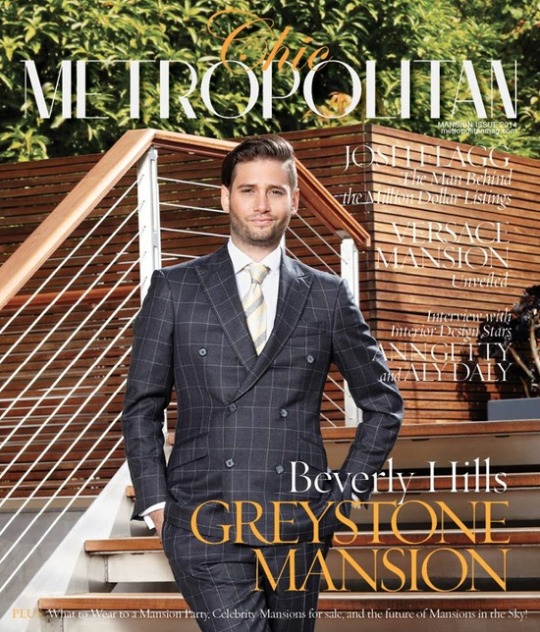
Source:- Chris Rojas San Francisco
#Chic Metropolitan#ChicMetropolitan#Chic#Metropolitan#Chris Rojas#ChrisRojas#Chris#Rojas#Chic Metropolitan Magazine Chris Rojas#ChicMetropolitanMagazine#Magazine#Chris Rojas Chic Metropolitan#Chris Rojas Chic Metropolitan Magazine#Chic Metropolitan Chris Rojas#Rojas Agency#Fashion#Lifestyle#Agency#Chris Rojas San Francisco#San Francisco
8 notes
·
View notes
Photo

Marauders would come to London at some point and Sirius would dig through fashion magazines to see what’s hot to try and “get one of those metropolitan chics”. Once he would walk into their shared apartment like this and everyone would burst out laughing and Sirius wouldn’t understand why and give them questioning looks throughout their whole walk around the city.
#random sirius headcanon#just because ben keeps giving me major sirius feels#sirius black#ben barnes
31 notes
·
View notes